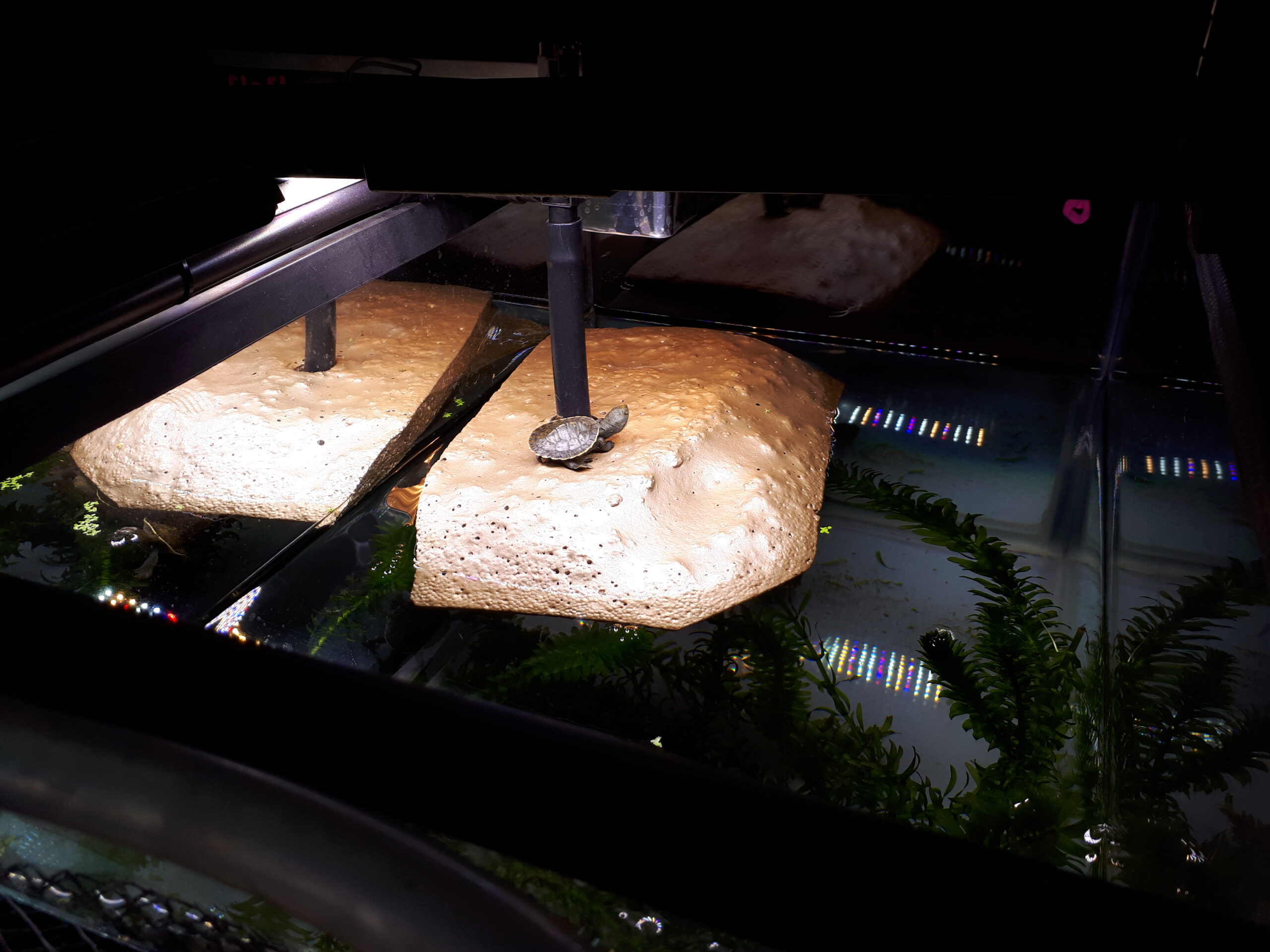Starter Care Guide for Turtles
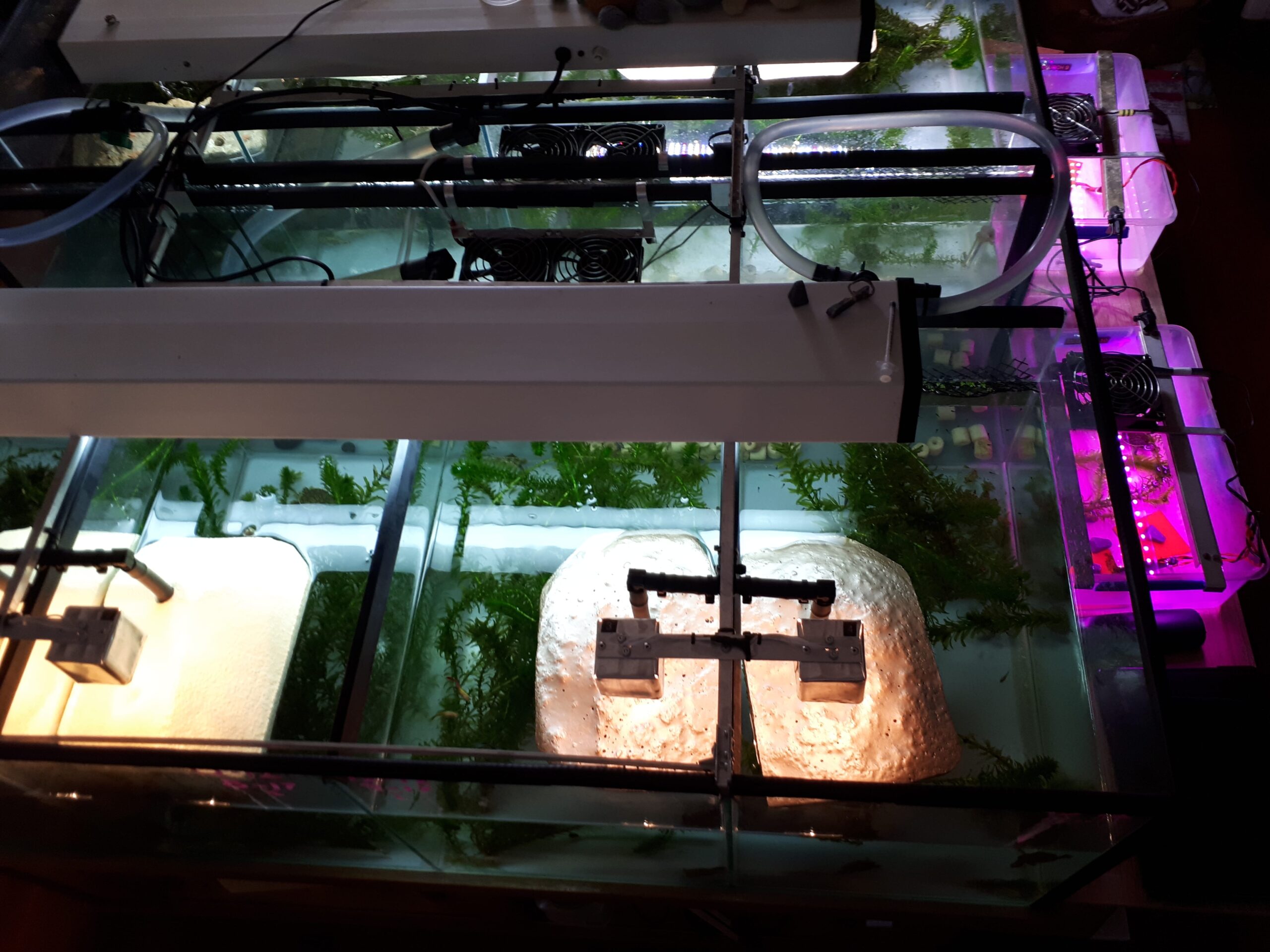
Tank Set Up
Water quality, needs to be clean, if using town water use a water conditioner to Dechlorinate the water, just as for fish. Rain water is better. Use some Aquarium salt on set up and water changes, small amount is only needed. The salt will help with any wounds or bites to heal and also helps with skin health. The water Ph need to be a Neutral of 7+, also keep in mind the water quality needed is not as strict as a tropical fish tank.
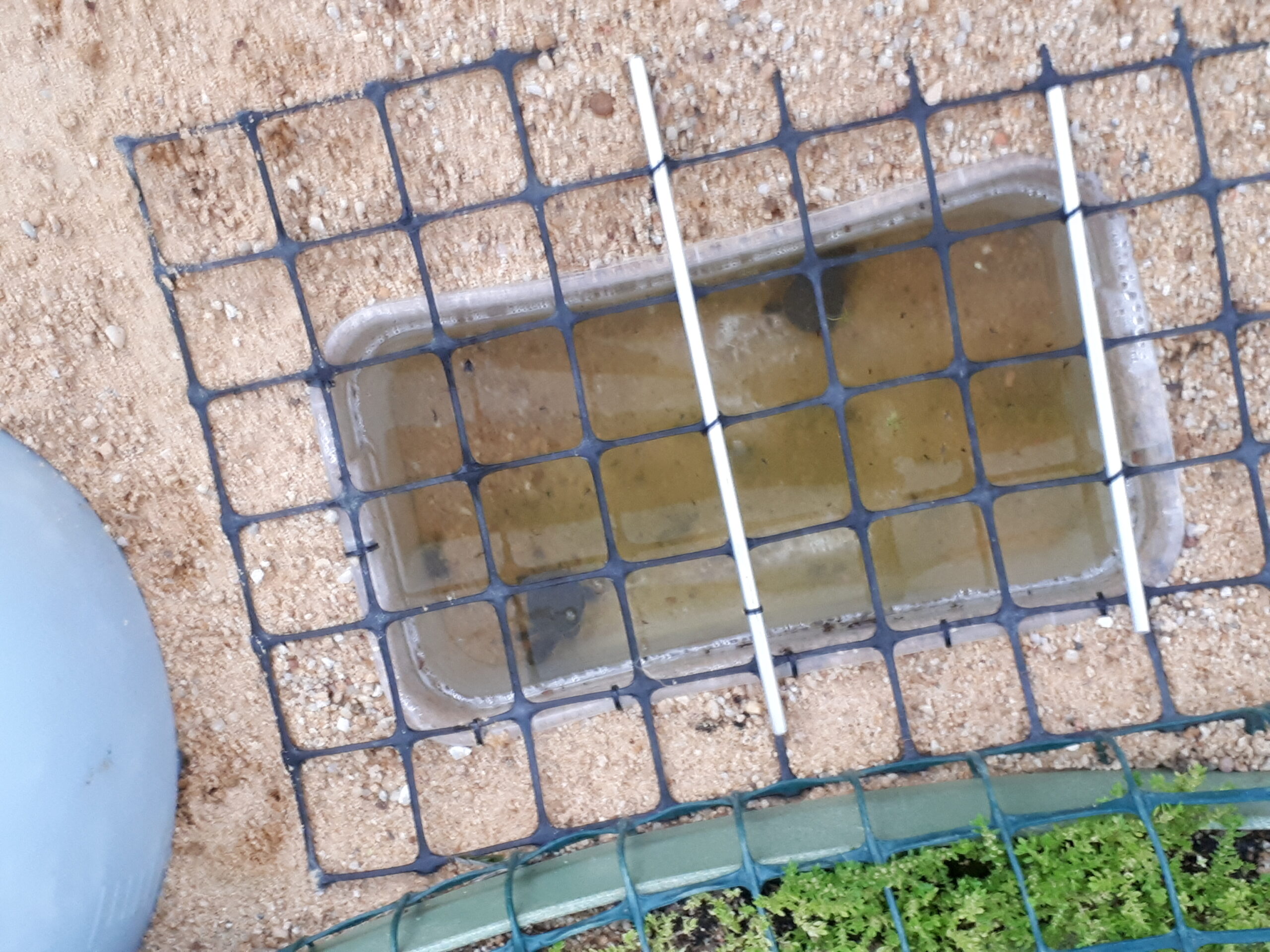
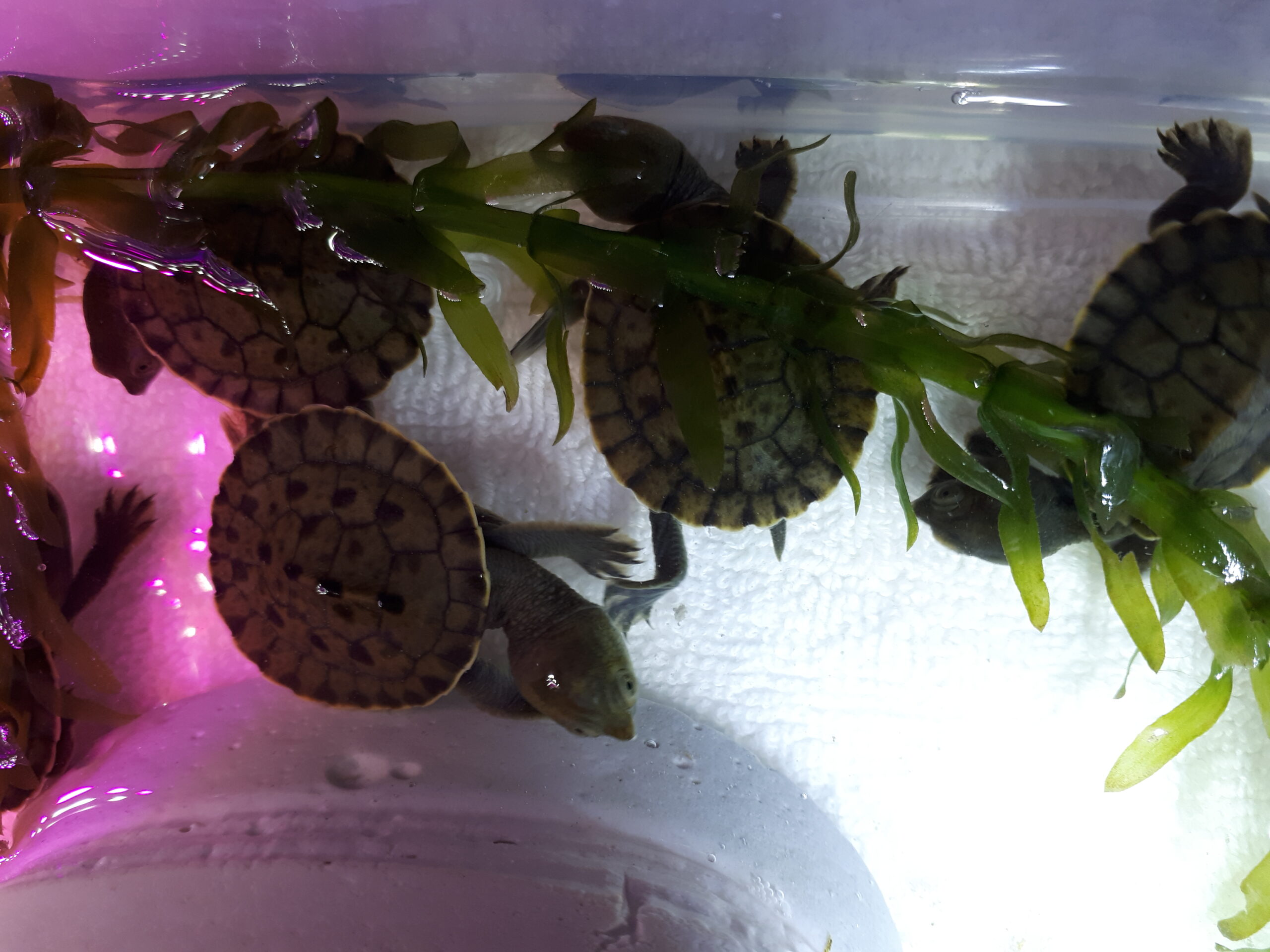
A Dock, the turtle requires to climb out of the water to dry out, have an area of a floating dock or removable platform with a heat lamp for some dry heat and with an overhead heat lamp.
Turtle health blocks from pet stores are not necessary if you are using Calgrit.
Plants are used to hide in and also helps them to perch just below the water level, and also is an important food source.
Turtles do like to hide but avoid items which may cause any entrapment of them.
Food and Feeding
As a baby, we feed them
- frozen Blood Worms (thawed),
- live Black Worms (can be hard to source Aquarama at Stafford and Smiths Aquarium at Boondall normally have them),
- live guppy fry of Gudgeons (native fish) and
- pellets. The pellets we use and recommend is Hikari Cichlid Gold, and comes in 4 different sizes so you can increase the size of the pellet as the turtle grows.
Other foods as they grow can include
- crickets,
- feeder prawns
- woodies which are available from pet shops or online.
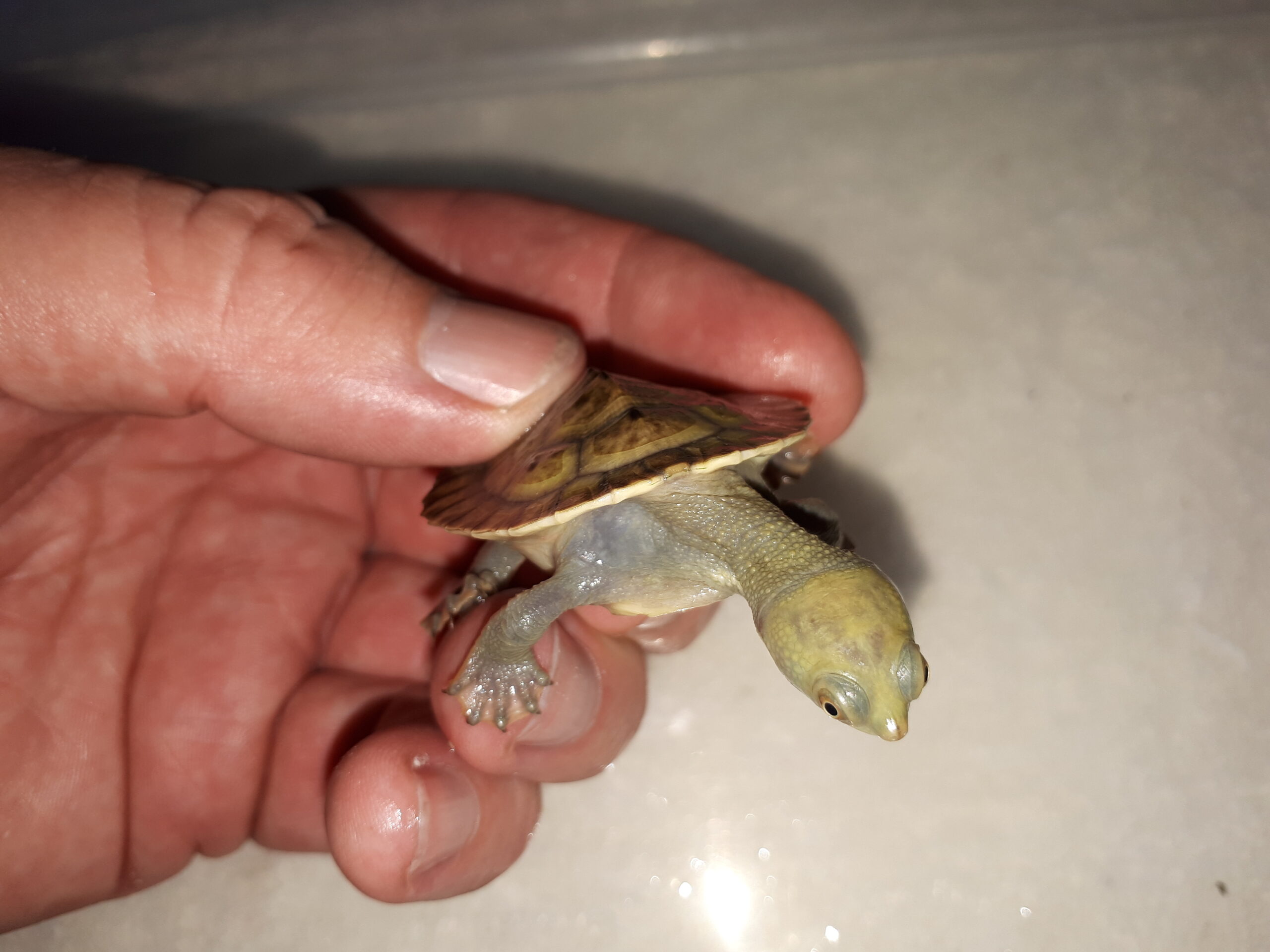
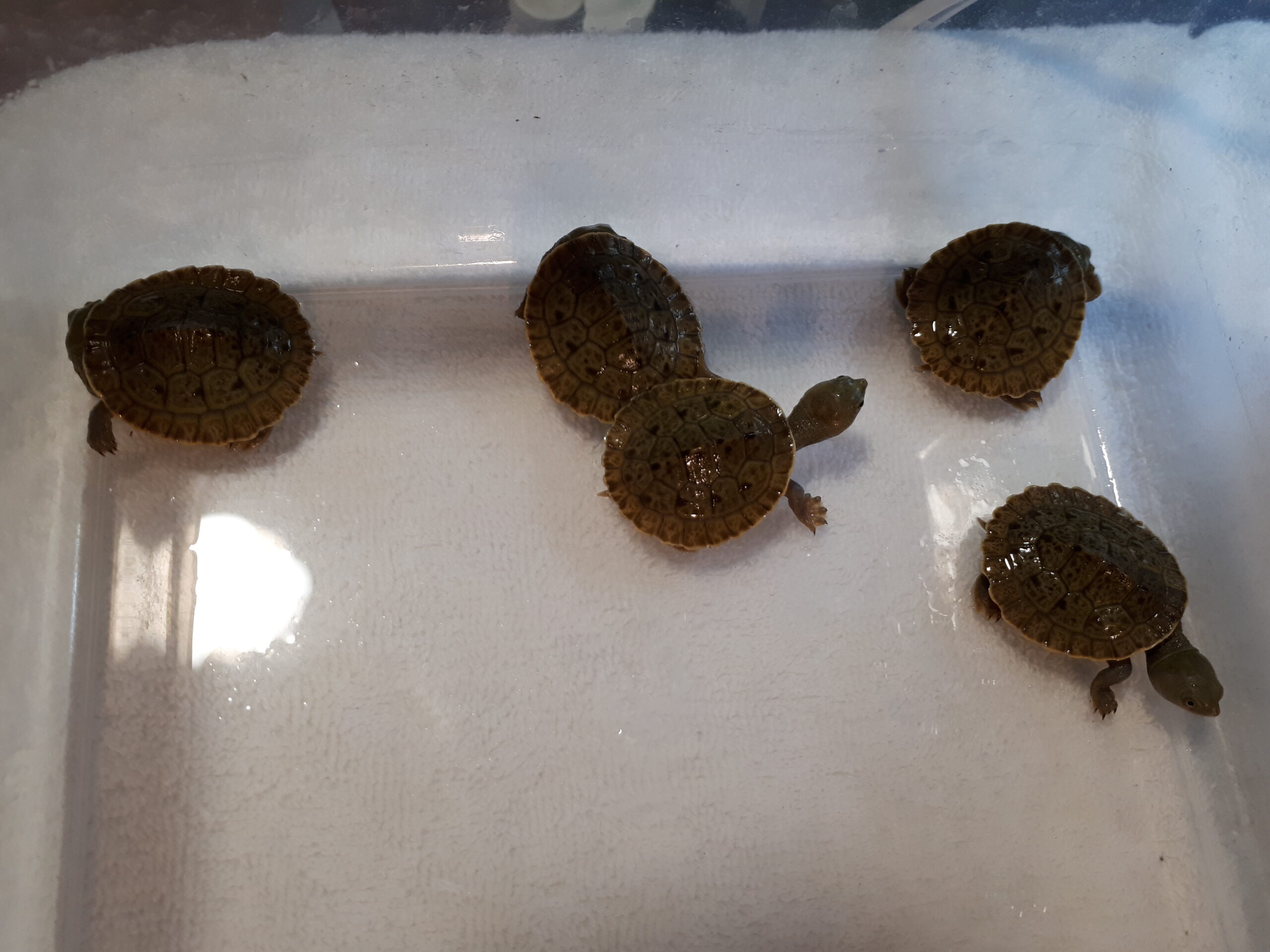
Do not serve the Turtle Veg, Baby Turtle Food, Turtle Dinners blocks or Beef hearts, these contain a lot of fats and ingredients not found in waterways, and basically is McDonalds for Turtles. Most of these are also they are designed to feed turtles in other countries, not Australian Native Turtles.
When buying feeder fish, Goldfish are not good for turtles and should be avoided.
As a baby your turtle should be fed once a day a small amount of what it can eat in about 5 minutes. As it grows and reaches 8 months of age we normally add in one day when they get no food, to when they are 2 years old they get fed every 2 to 3 days.
Plants, particularly the short neck turtles love to eat plants and will also hide and climb through the plants, lots of plants is good for the baby turtles. Common plants used are Val and Elodea, which is easy to get.
Best way to feed your baby turtle, is to draw some water from the tank into a 3 litre container or a suitable size container, put in your turtles, give a serve of pellets and wait for 10 min approx., give a serve of blood worms thawed, about 0.5 to 1 cube per turtle, allow time for them to eat the worms and also defecate and then return the turtles back to the tank and discard the water.
Using a white table or a piece of paper under the container will make it easier for them to see the food.
Dry time
Handling
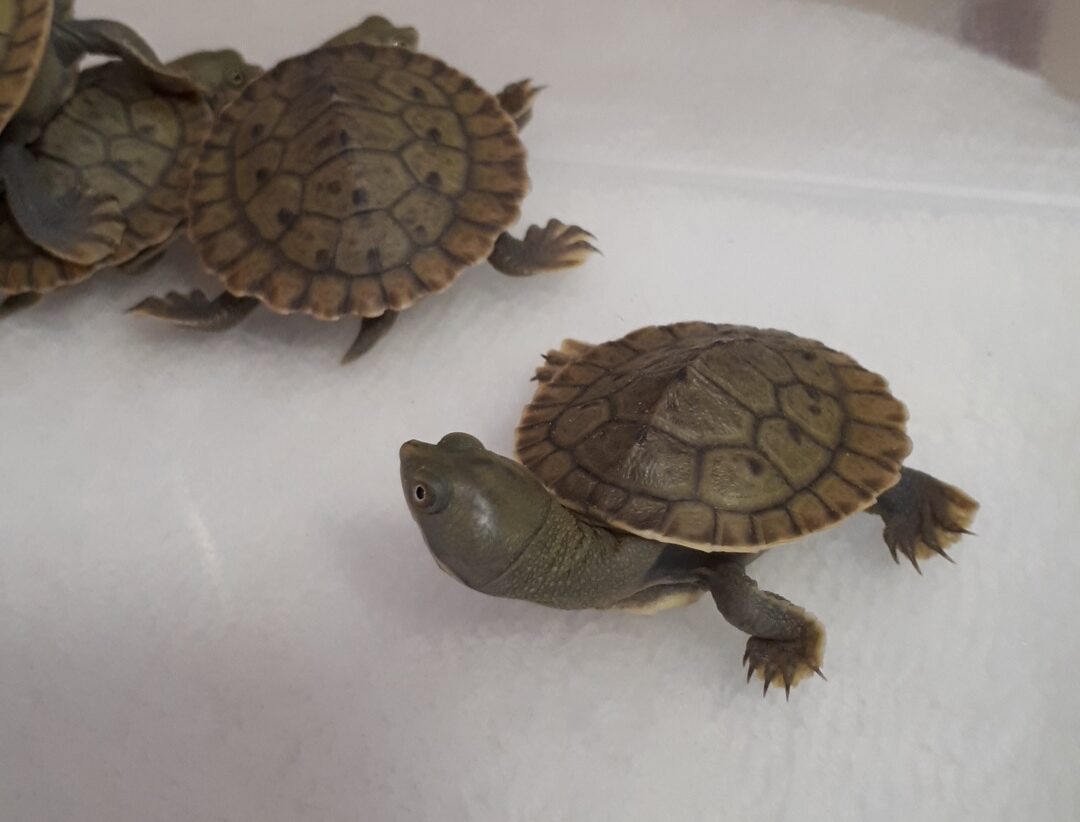
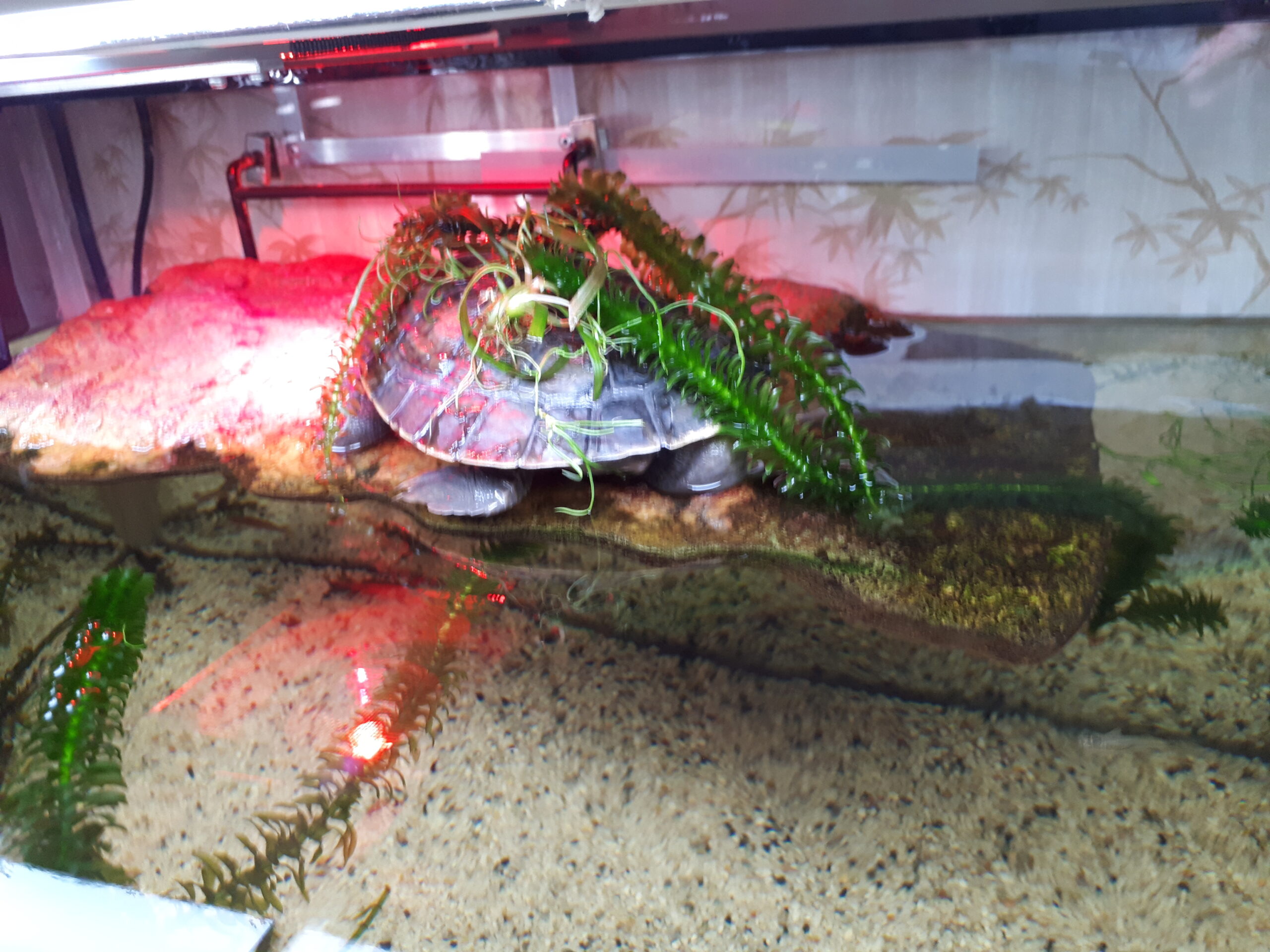
Travelling with turtles
When you need to transport a turtle (to a vet or holidays etc) never transport them in water, place in a small box which has lid with holes for air to get in a damp towel and transport them like this. Use a lid to stop your turtles from climbing out and will stop them getting lost inside your car. If travelling long distance, when you stop for a break, put the turtles into some water while having the rest.
Never leave your turtle in a parked car, even if it is in the shade, cars and turtles heat up extremely quickly and this can be fatal.
Sexing your turtle
Very hard to tell, but when of 2 to 4 years old is easier, the male has a long tail and the female has a short tail. Refer to turtle web pages for more information.
FYI. On the day of pickup.
We only feed the baby turtles at night only, as this suits our routine. So, your new baby has not eaten today. Also, it may take up to a few days before they decide to eat, don’t be alarmed as they can survive over a week without food. Your new family member may take time to adopt to its new home and activity around them. Enjoy your new turtles.
